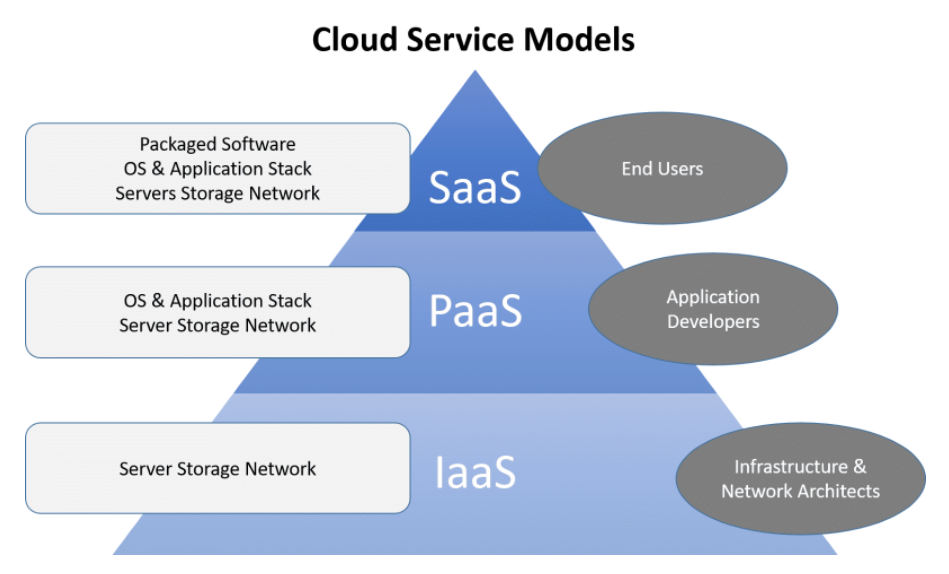
How a BDE Connects Business Vision With Technology
How a BDE Connects Business Vision With Technology Kumkum Kumari 21/11/2025At Speqto, we work with organizations that are constantly evolving entering new markets, scaling operations, or […]


As members of the modern and advanced technical society, we have heard about an upcoming technology called as cloud computing. However, a majority of us do not know the actual meaning or application of cloud computing and its true capabilities. Over the course of this blog, we will try to understand what cloud computing means in the modern world, how it works and its reach for exponential popularity growth in the market. Cloud computing stands for ready availability of computing, storage and a broad range of computer related resources which costs significantly less than the physical setup and it works without the need for any kind of physical infrastructure. Some of the popular vendors for cloud computing include Amazon web services, Microsoft Azure, Google Cloud, Salesforce and IBM cloud. These 5 vendors of cloud services hold the highest market share in the industry. Some of the primary functionalities offered by the cloud services are :-
1. Storage –Very Large amounts of data can be stored without any kind of challenges or issues.
2. IaaS – An entire company’s IT infrastructure can be developed on the cloud at just a fraction of the cost of buying physical hardware.
3. PaaS – A majority of the developers use a cloud service as a platform to build their solutions and their softwares because of the high number of resources available and the flexibility offered by the cloud vendors.
4. SaaS – Cloud vendors often offer the entire suite of services and resources to someone which is collectively called as SaaS. This includes all the services mentioned in the above points.
The primary reason for the popularity of the cloud computing solutions is the availability and deliverability of on demand digital resources to a customer irrespective of the nature and the size of the resources required.
As evident in the above graph which compares the popularity of the 3 biggest cloud vendors, AWS or Amazon Web Services is significantly more popular as compared to the other cloud service providers. This is primarily due to the user friendly interface offered.
Types of Cloud Deployment :-
1. Private Cloud :- This is the most basic and the economical forms of cloud deployment. The service provider bears the cost of bandwidth and the infrastructure. The configurations and the available resources are limited a large extent. However, the end user enjoys the most benefit as the billing is carried out based on the usage of the user i.e. pay per use model. This deployment strategy is more feasible for single users or a small group of users. Large companies do not use this model due to the high security standards and sensitive data which needs to be stored on the cloud servers.
2. Public Cloud :- This cloud deployment strategy offers significantly higher standards of control over configurations, customizations, scalability, flexibility and security of the assets and the operations of the company. The biggest advantage of the private cloud is the exclusivity of the access only for the owner of the cloud. The private cloud can be deployed on the on-premises or on a 3rd service provider’s network.
3. Hybrid Cloud :- This deployment is a combination of both private and public cloud. A majority of the corporate world prefers or employs hybrid cloud in their organization due to the variation in the tasks and requirements. Companies use a single portal to control and monitor both the deployments. Companies use public cloud for high volume applications such as emails, while the private cloud is used for more sensitive and confidential information. The application of the hybrid cloud offers the highest level of efficiency, usability and flexibility in terms of business operations without compromising the security standards.
Government organizations are the biggest users of various tools built using blockchain solutions. Identity of people is a confidential piece of information. Any kind of compromise of the system has the potential to cause a lot of harm and damage to the individual and the society. A decentralised system offers these organizations exactly what they are looking for. Any kind of modifications are recorded along with a time stamp. The secure network offered by the blockchain ensures the security and safety of all the people in the modern digital world. Solutions from Speqto Technologies offer unparalleled levels of security.
Benefits of using Cloud Services :-
1. Scalability:-Cloud solutions from Speqto technologies can be built for a small company with just 10 people or for a company of 50,000 employees. The scalability of the cloud services is the reason for its high popularity in the industry.
2. Accessibility:- The use of physical resources restricts the accessibility of the resources by a significant amount. In the evolving digital industry, quick and easy accessibility is the most desirable feature of cloud services which is exactly what we provide here at Speqto Technologies.
3. Operational Agility :- Cloud services offer unrivalled levels of computational capabilities. Companies today are looking ways to increase their IT capabilities and computational prowess. That is the reason for the popularity of custom built cloud solutions by Speqto Technologies.
4. Reduced Expenditure :- The use of cloud services and the corresponding payment is based on pay-per use. This means, the means the company has to pay just for the resources they use. Additionally, companies do not need to pay for buying any kind of physical resources which is a huge win for the clients.
5. Disaster Recovery :- Data and any kind of valuable information is the most critical resource for a company. This valuable resource should not be compromised or manipulated in any way. Cloud solutions by Speqto Technologies always keep a backup of the data which can be retrieved, used any restored any point of time.
Cloud deployment models depend on the requirements and goals of the user. A single user would be quite satisfied with the services offered by the private cloud. However, a large corporation or a government body would not be satisfied or happy with the features and functionality offered by the public cloud. Hence they opt for one of the other deployment models depending on their usage and end goal.

How a BDE Connects Business Vision With Technology
How a BDE Connects Business Vision With Technology Kumkum Kumari 21/11/2025At Speqto, we work with organizations that are constantly evolving entering new markets, scaling operations, or […]

Apache JMeter Demystified: Your 7-Stage Blueprint for a Seamless First Performance Test
Apache JMeter Demystified: Your 7-Stage Blueprint for a Seamless First Performance Test Megha Srivastava 21 November 2025 In the intricate world of software development and deployment, ensuring a robust user experience is paramount. A slow application can quickly deter users, impacting reputation and revenue. This is where Apache JMeter emerges as an indispensable tool, offering […]

STRIDE Simplified: A Hands-On Blueprint for Pinpointing Software Threats Effectively
STRIDE Simplified: A Hands-On Blueprint for Pinpointing Software Threats Effectively Megha Srivastava 21 November 2025 In the intricate landscape of modern software development, proactive security measures are paramount. While reactive incident response is crucial, preventing vulnerabilities before they become exploits is the hallmark of robust software engineering. This is where threat modeling, and specifically the […]

From Static to Streaming: A Practical Developer’s Guide to Real-time Applications Using GraphQL Subscriptions
From Static to Streaming: A Practical Developer’s Guide to Real-time Applications Using GraphQL Subscriptions Shakir Khan 21 November 2025 The Paradigm Shift: From Static to Streaming Experiences In an era where user expectations demand instant gratification, the web has rapidly evolved beyond its static origins. Today, a modern application’s success is often measured by its […]

The TanStack Query Edge: Deep Dive into Advanced Caching for Optimal Application Speed
The TanStack Query Edge: Deep Dive into Advanced Caching for Optimal Application Speed Shubham Anand 21 November 2025 In the relentless pursuit of seamless user experiences and lightning-fast web applications, data management stands as a formidable challenge. Modern front-end frameworks demand intelligent solutions to handle asynchronous data, and this is precisely where TanStack Query (formerly […]